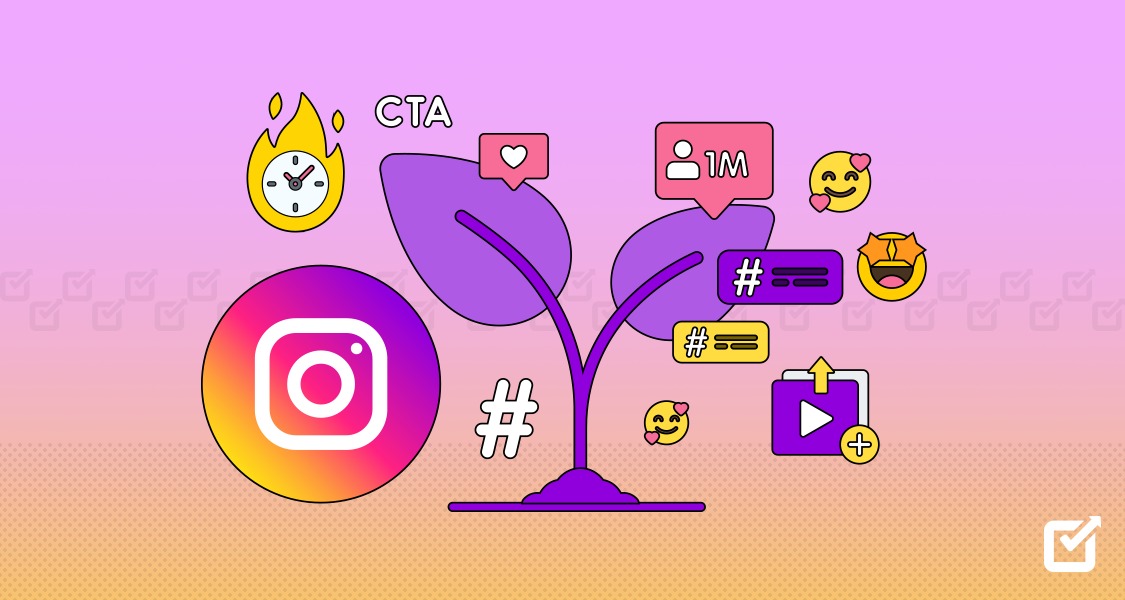Are you looking to accelerate the growth of your business in 2024? Growth hacking may just be the strategy you’ve been searching for.
Growth hacking has become a buzzword in the business world, but what does it entail? In simple terms, growth hacking is a set of strategies focused on rapid experimentation and growth in the early stages of a startup. It involves creative marketing techniques, data analysis, and a deep understanding of consumer behavior to drive sustainable growth.
If you’re new to growth hacking and want to learn how to implement this strategy in your business, we’ve got you covered! This guide will explore the fundamentals of growth hacking and provide tips on effectively leveraging this approach to achieve exponential growth.
Before we get started, here’s a little tip: you can simply leverage Social Champ’s free social media scheduler to post consistently on social media, making growth hacking streamlined.
Let’s get started!
What Is Growth Hacking?
Growth hacking involves using creative strategies, quick experiments, and data analysis to achieve rapid growth.
Unlike traditional methods, this approach focuses on scalable tactics and measurable results. It often utilizes digital channels and user-centric optimizations to acquire and retain customers effectively.
Essentially, growth hacking strategies are about finding efficient ways to accelerate business growth through continuous learning and adaptation. One of its defining features is its focus on measurable outcomes and rapid iteration. Growth hackers use data analytics and metrics to track the performance of campaigns and make data-informed decisions about where to allocate resources for maximum impact.
Similarly, B2B growth hacking involves applying creative and data-driven strategies to accelerate growth in business-to-business (B2B) environments. This includes identifying and targeting high-value leads, optimizing sales and marketing processes, leveraging technology and automation, and fostering long-term customer relationships.
Want to Supercharge Want a Perfect Tool for Your Growth Hacking Plan? Try Social Champ!
With this tool, you can monitor, create, analyze, and schedule posts, all from a single dashboard!
Related Article: 15 Best Social Media Marketing Podcasts for Online Marketers
How Growth Hacking Can Help Your Business
Growth hacking offers businesses a strategic and data-driven approach to achieving rapid growth, acquiring customers cost-effectively, optimizing user experiences, and staying agile in a constantly evolving market. Here’s a detailed exploration of how this approach can benefit your business:
- Cost-Effective Strategies: Unlike traditional marketing methods that require significant financial investment, growth hacking focuses on low-cost or no-cost strategies. This can include leveraging social media platforms, content marketing, referral programs, and SEO techniques to reach and engage target audiences without breaking the bank.
- Optimized User Experience: An essential aspect of growth hacking is optimizing the user experience across all touchpoints. This includes website design, mobile responsiveness, navigation flow, and checkout processes. By providing a seamless and user-friendly experience, businesses can enhance customer satisfaction, encourage repeat purchases, and generate positive word-of-mouth referrals.
- Data-Driven Decision-Making: Data is at the heart of growth hacking. Businesses can make data-driven decisions that drive growth by analyzing customer behavior, market trends, and campaign performance metrics. This includes identifying areas for improvement, refining marketing strategies, and scaling successful initiatives for maximum impact.
- Scalable Growth Strategies: Growth hacking is about finding scalable and repeatable strategies to fuel exponential growth. This could involve creating viral content, implementing referral programs, optimizing conversion funnels, or leveraging automation tools to streamline processes and drive efficiency.
- Adaptability and Flexibility: This method encourages businesses to stay agile and flexible, allowing them to respond quickly to market changes, consumer trends, and competitive dynamics. This agility enables businesses to seize new opportunities and stay ahead of the curve.
Related Article: 10 Hottest Content Marketing Trends That Will Rule the Industry in 2025
How to Increase Your Brand’s Visibility With Social Media Growth Hacking?
If you want to increase your brand’s visibility, you need to develop unique ideas, creative strategies, and data-driven techniques. Here’s how you can integrate growth hacking into your social media strategy.
Identify Your Target Audience
Hacking growth in social media is all about understanding your target audience’s demographics, preferences, and behaviors. You can use data analytics and audience insights to create detailed buyer personas that guide your content creation and engagement strategies.
Optimize Your Social Profiles
Ensure your social media profiles are fully optimized with consistent branding elements, compelling visuals, and keyword-rich descriptions. This helps improve your visibility in search results and makes it easier for users to find and engage with your brand.

Create Compelling Content
Develop high-quality, relevant, and engaging content that resonates with your target audience. Use a mix of formats, such as videos, infographics, blog posts, and interactive content, to capture attention and encourage sharing. You can also experiment with storytelling, humor, and user-generated content to humanize your brand and foster community engagement.

Utilize Influencer Partnerships
Collaborate with influencers and industry experts to amplify your brand’s reach and credibility. Identify influencers whose audience aligns with your target market and create authentic partnerships that add value to both parties. You can further encourage influencers to create user-generated content and share their experiences with your brand to generate buzz and social proof.
Utilize the Power of User-Generated Content
Encourage your customers to create and share content related to your brand. User-generated content acts as social proof and helps build trust and authenticity. You can run contests, challenges, and campaigns that incentivize users to create and share content. You can also showcase user-generated content prominently on your social media channels.
Optimize for Social Sharing
Include social sharing buttons, clickable hashtags, and compelling CTAs in your posts to make it easy for users to share your content. Your brand can also encourage users to tag friends, share their experiences, and participate in discussions to increase visibility and organic reach.
Engage and Interact Actively
Actively engage with your audience by promptly responding to comments, messages, and mentions. It is also essential to foster two-way conversations, ask for feedback, and encourage user participation to build a loyal and engaged community. Additionally, your brand can monitor social media conversations, trends, and mentions related to your industry to identify opportunities for engagement and interaction.
Utilize Data Analytics
Use social media analytics tools to track key metrics such as reach, engagement, click-through rates, and conversions. You can also analyze the performance of your social media campaigns, identify top-performing content, and optimize your strategies based on data-driven insights. Next, you can A/B test different approaches, experiment with new ideas, and iterate on successful tactics to continually improve your brand’s visibility and impact on social media.
Featured Article: Affiliate Marketing: What It Is & How to Get Started in 2025
How Can You Hack Your Social Media Marketing Strategies for Maximum Growth?
To hack your social media marketing strategies for maximum growth, consider implementing the following tactics:
Set Clear Goals
Define specific, measurable goals for your social media marketing efforts, such as increasing brand awareness, driving website traffic, generating leads, or boosting sales. Having clear objectives allows you to focus your efforts and track progress effectively.
Create Compelling Content
Develop high-quality, relevant content that adds value to your audience’s lives. To keep your content strategy diverse and engaging, use a mix of formats, including videos, images, infographics, blog posts, and user-generated content.
Optimize for Each Platform
Tailor your content and messaging for each social media platform based on its unique audience demographics and features. Optimize your posts for searchability, use relevant hashtags, and use platform-specific tools and formats (This can include Instagram Stories and LinkedIn Pulse articles) to maximize visibility and engagement.
Collaborate and Partner
Partner with influencers, industry experts, and complementary brands to expand your reach and tap into new audiences. Collaborate on co-branded content, cross-promotions, and joint campaigns to amplify your message and drive growth.
Optimize Paid Advertising
Incorporate paid social media advertising into your strategy to complement organic efforts and reach a broader audience. Use targeting options, retargeting campaigns, and ad formats that align with your goals and audience preferences to maximize ROI.
9 Growth-Hacking Techniques for Startups and Small Businesses
Here are ten growth-hacking techniques specifically tailored for startups and small businesses to accelerate their growth:
Referral Programs
Implement a referral program where existing customers are incentivized to refer new customers. Offer rewards like discounts, credits, or exclusive access to encourage referrals and drive customer acquisition.
Stay Aware of the Competition
Monitoring and staying aware of your competition is crucial for identifying market trends, customer preferences, and potential opportunities. Conduct competitive analysis to understand competitors’ strategies, strengths, weaknesses, and market positioning.
Recycle & Reshare Your Content
Recycling and resharing your content involves repurposing existing content assets across different channels and formats. Instead of creating entirely new content from scratch, utilize your existing library by updating, repackaging, or republishing it for different platforms and audiences.
For example, you can turn blog posts into infographics, podcasts, or videos, share user-generated content on social media, and repurpose webinar recordings into downloadable guides or ebooks.
Email Marketing
Build an email list of interested prospects and customers and utilize email marketing campaigns to nurture leads, promote products or services, and drive conversions. Use personalized and targeted email content to increase engagement and retention.

Product Hunt’s email marketing campaign for growth hacking Customer Retention Strategies
Focus on retaining existing customers by providing exceptional customer service, offering loyalty programs, and soliciting feedback to improve customer satisfaction and loyalty. Repeat customers are often more valuable than acquiring new ones.
Cross-Platform Promotion
Cross-platform promotion entails promoting your brand and content across multiple channels and platforms to reach a wider audience. Develop a cohesive multichannel marketing strategy that utilizes social media, email marketing, SEO, paid advertising, and other digital channels to amplify your brand’s visibility and engagement.
Host Joint Events or Webinars
Organize joint events, webinars, or workshops with your partner brand to share knowledge, educate your audience, and foster community engagement. This provides value to attendees and strengthens the relationship between the two brands.
SEO Optimization
Optimize your website and content for search engines to improve organic visibility and attract relevant traffic. Conduct keyword research, optimize meta tags, improve site speed, and build high-quality backlinks to boost your SEO efforts.
Guest Posting
Writing guest posts can significantly boost your brand’s visibility and authority in your industry. To get started, research and identify relevant publications that align with your target audience and content focus. Understand their audience demographics, content style, and guidelines for guest contributors.
In Conclusion
This guide on growth hacking is a roadmap for startups and small businesses seeking to accelerate their growth and achieve success. By using strategies like partnering with new brands, staying aware of the competition, using platforms like HARO, recycling and resharing content, and engaging in cross-platform promotion, businesses can discover new opportunities, reach wider audiences, and drive sustainable growth.















